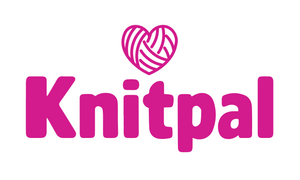
Your Guide to Merino Wool and Yarn
If you’re moving in knitting circles, one of the most common types of wool people talk about, is Merino. But what exactly is Merino wool and what makes it special?
What is Merino wool?
Merino wool refers to the fleece of the Merino breed of sheep as well as the yarn that is spun from it.

The Merino sheep
Merino sheep, which was originally bred in Spain during the Middle Ages, are bred predominantly for their wool. The Merino must also be shorn at least once a year as their wool doesn’t stop growing and not shearing them can have some nasty health implications.
A natural forager, Merino sheep are also highly adaptable and can be seen living and thriving in very different environments.

Countries that are now known for their Merino sheep, include the United States, Australia, and South Africa. Countries like Peru also have Merino sheep that deliver high-quality Merino wool (and that KnitPal source their yarn from).
But what makes Merino wool so sought after?
Merino wool

Merino sheep have some of the softest and finest wool of any sheep. While the different Merino breeds all have slightly different fleece of slightly different quality.
How much the Merino wool costs, therefore, doesn’t just depend on it being Merino, as such, but the specific breed of Merino the wool comes from. (A Merino bred for meat will have fleece that is not as soft and abundant as those who have been bred for their fleece alone.)
Staples and diameter
Merino wool staples (the individual fibers) are commonly 2.6-3.9” long, with a Saxon Merino producing some 6.6-13.2 lb greasy wool a year. A good quality Peppin Merino ran can produce up to a staggering 40 lb wool per year!
The wool is also divided into basic types depending on how fine the single strands of wool are:
- Strong (broad) wool (23–24.5 μm)
- Medium wool (19.6–22.9 μm)
- Fine (18.6–19.5 μm)
- Superfine (15–18.5 μm)
- Ultra fine (11.5–15 μm)
The ultra fine wool is suitable to blend with fibers like silk and cashmere, making it an even more luxurious fiber.
Superwash Merino Wool
A common way to make Merino wool easier to take care of is to make it a “superwash” wool. When the wool is treated by either an acid bath or covering the yarn with a microscopic layer of resin, the wool can be washed in a washing machine without turning into a clump of felt.
Superwash Merino wool is especially handy for making socks or other garments that will be worn in a way where friction can’t be avoided - whether when wearing or by having to wash an item often.
Characteristics that make Merino wool irresistible
Certain characteristics of the Merino wool makes it completely irresistible, especially for garments - and then even those worn right next to the skin. These include:
- Merino wool is odorless
- The price of Merino wool is competitive, especially for a natural fiber
- Merino yarn has natural UV protection
- It’s warm but - unlike synthetic yarn and fabric - still breathable
- Merino wool also helps to manage moisture when it gets wet and can absorb unpleasant odors. This means that Merino wool is even ideal for sportswear!
- Merino garments need minimal ironing - if any
- Can be dyed with both man-made and natural dyes and also takes dye very well, giving the dyed yarn an almost jewel-tone quality.
Stuart Beverage of the WFSMB, says of Merino: “Merino wool, [is] without a doubt the most versatile fiber in the world and natural fiber at that”. And we can’t help but agree with him!
Being a natural fiber, Merino wool is also renewable, can be produced sustainably and is also environmentally friendly. It’s important to remember that the Merino sheep are only shorn of their fleece - there is no need to slaughter them in order to get the fleece.
More and more farms are also taking a good look at how ethically they are looking after their Merino sheep and stopping practices like mulesing.
This means that you can rest assured that the sheep you get your wool from, like those KnitPal sources their yarn from, is treated with as much care and respect as possible.
What about KnitPal’s Merino yarn?
KnitPal’s 100% Merino yarn comes from Peru, where the Merino sheep are raised by small-scale farmers in the Andes of Southern Peru.

Completely adapted to their Peruvian environment, these sheep live at altitudes of 11 500-16 000 ft above sea level. This altitude means that the temperatures can differ by more than 50 degrees in one day!
Because of this environment and adaptation, the Merinos’ fleece are especially thick and hardy while still retaining softness.
At KnitPal we also pride ourselves on the fact that we support small, women-owned farms in rural Peru by sourcing our yarn ethically from them. The Merino yarn is then hand dyed with love and care in KnitPal’s Californian studio.
KnitPal also donates three pairs of socks to the children's emergency center in Pine Ridge Reservation as a way to give love and hope to the community.
